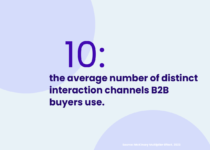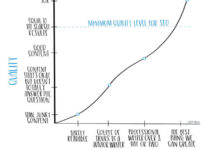What is AIO Marketing and Why Your Business Needs It in 2025
The marketing landscape has reached a tipping point. While the average enterprise now juggles 91 different marketing tools according to recent industry research, forward-thinking organizations are consolidating their entire marketing operation into unified platforms that deliver exponentially better results. The question isn’t whether your marketing stack is too complex. It’s whether you’re ready to embrace the integrated approach that’s reshaping how successful businesses acquire, engage, and retain customers.
This shift toward All-in-One (AIO) Marketing represents more than just tool consolidation. It’s a fundamental reimagining of how marketing teams operate, measure success, and drive revenue growth. As we’ll explore through real case studies and market data, companies implementing AIO marketing strategies are seeing dramatic improvements in ROI, operational efficiency, and customer experience quality.
TABLE OF CONTENTS:
Defining AIO Marketing: The Integrated Approach That’s Reshaping Business Growth
AIO Marketing, or All-in-One Marketing, consolidates your entire marketing ecosystem into a single, integrated platform that manages everything from customer data and email campaigns to social media, analytics, and automation workflows. Rather than managing separate tools for each marketing function, AIO platforms provide a unified command center where every customer touchpoint, campaign metric, and optimization opportunity lives under one roof.
The core framework centers on three fundamental principles: unified data architecture, streamlined workflow orchestration, and comprehensive performance visibility. This means your customer data flows seamlessly between email marketing, social media management, content creation, lead scoring, and analytics. Eliminating the data silos and integration headaches that plague traditional multi-tool approaches.
What sets AIO Marketing apart from simply using multiple integrated tools is the depth of native functionality and the intelligence built into cross-channel optimization. These platforms don’t just connect your marketing activities. They actively optimize campaigns across channels using shared customer intelligence and behavioral data.
Market Momentum: Why AIO Marketing Dominates 2025
The numbers tell a compelling story about AIO Marketing’s trajectory. According to DataHorizzon Research, the global all-in-one marketing platform market reached $10 billion in 2023, with projections showing a robust 13.2% compound annual growth rate through 2033. This momentum is expected to drive the market to $45 billion by 2033, according to the same research.
| Market Metric | Current Value (2025) | Projected Value (2033) | Growth Rate |
|---|---|---|---|
| Global Market Size | $12.3 billion | $45 billion | 13.2% CAGR |
| Enterprise Adoption | 34% | 67% (projected) | 8.9% annually |
| SMB Market Share | 56% | 78% (projected) | 4.2% annually |
This growth reflects a fundamental shift in how marketing leaders view technology investments. Rather than optimizing individual tools, successful organizations are optimizing entire customer experiences through integrated platforms that provide both operational efficiency and strategic agility.
The acceleration is particularly pronounced among growth-stage companies in SaaS, e-commerce, and B2B services sectors, where the ability to rapidly test, iterate, and scale marketing campaigns directly impacts revenue growth and market positioning.
Essential Components of Effective AIO Marketing Platforms
Modern AIO marketing platforms integrate several core functional areas that traditionally required separate software investments. The most effective platforms combine these capabilities with native intelligence and automation that wouldn’t be possible with point solutions:
- Customer Data Platform (CDP): Unifies customer interactions across all touchpoints, creating comprehensive profiles that inform every marketing decision
- Multi-Channel Campaign Management: Orchestrates email, social media, content marketing, and paid advertising from a single interface
- Marketing Automation and Workflows: Triggers personalized customer journeys based on behavior, preferences, and lifecycle stage
- Advanced Analytics and Attribution: Provides multi-touch attribution modeling and ROI tracking across all marketing activities
- Content Creation and Management: Includes tools for creating, scheduling, and optimizing content across channels
- Lead Scoring and Sales Enablement: Identifies high-value prospects and facilitates smooth handoffs to sales teams
The key differentiator isn’t just having these features. It’s how they work together intelligently. For example, when a customer engages with your email content, the platform automatically adjusts their social media ad targeting, updates their lead score, and triggers relevant content recommendations across all channels.
“The real power of AIO marketing isn’t in the individual tools, it’s in the intelligence that emerges when customer data, content, and campaigns operate as a unified system. We’re seeing clients achieve results that simply weren’t possible with fragmented tool stacks.”, Marketing Operations Leader at a leading AI marketing agency
Real-World Impact: Case Studies in AIO Marketing Transformation
The theoretical benefits of AIO marketing become clear when examining actual implementation results. Three case studies illustrate the transformative potential across different business contexts and growth stages.
Vogacloset’s Omnichannel Personalization Success: This fashion e-commerce company faced the challenge of consolidating fragmented customer data spread across multiple tools to deliver seamless, hyper-personalized experiences. By deploying an all-in-one marketing platform that unified their Customer Data Platform with automated cross-channel campaigns, they generated a 30× ROI, with WhatsApp emerging as their single highest-return channel across all campaigns. The integration was completed in under eight weeks, demonstrating the speed advantage of unified platforms.
Midwest Retailer’s Digital Transformation: A traditional brick-and-mortar retailer was struggling with rising customer acquisition costs and poor tracking from print, radio, and coupon campaigns. After shifting to an all-in-one digital marketing platform, they achieved remarkable results within 90 days: marketing ROI jumped from 1.4× to 4.2×, new-customer acquisition cost dropped from $68 to $24, and campaign revenue rose from $13,500 to over $40,000.
CH Hanson’s B2B Brand Expansion: This industrial manufacturing company struggled with low brand recognition and limited lead generation, with prospects perceiving them as offering only one product line. By adopting an all-in-one marketing automation platform to unify branding and coordinate multichannel campaigns, they achieved measurable lifts in brand awareness and significant improvements in marketing ROI through enhanced lead nurturing and qualification processes.
Strategic Comparison: AIO Marketing vs. Point Solutions
Marketing leaders evaluating AIO platforms often weigh them against best-of-breed point solutions. While point solutions may offer deeper functionality in specific areas, AIO platforms provide distinct advantages that often outweigh feature gaps:
Data Integration and Intelligence: Point solutions require complex integration work and often suffer from data silos that limit cross-channel optimization. AIO platforms provide native data connectivity that enables real-time customer intelligence and automated campaign optimization that wouldn’t be possible with separate tools.
Operational Efficiency: Teams using AIO platforms report significant time savings from reduced context switching, simplified training requirements, and streamlined workflows. This efficiency gain often translates to 20-30% improvement in campaign velocity and team productivity.
Total Cost of Ownership: While individual point solutions may have lower upfront costs, the combined expense of multiple tools, integration work, and ongoing management often exceeds AIO platform costs. Additionally, AIO platforms reduce the technical overhead associated with maintaining multiple vendor relationships and integration points.
Scalability and Agility: AIO platforms enable rapid testing and scaling of new marketing channels and strategies without requiring new tool evaluations, procurement processes, or integration work. This agility becomes increasingly valuable as market conditions and customer behaviors evolve.
Implementation Strategy for Marketing Leaders
Successfully transitioning to AIO marketing requires a structured approach that minimizes disruption while maximizing the strategic benefits. The most effective implementations follow a phased methodology that addresses both technical and organizational change management.
Phase 1: Strategic Assessment and Platform Selection (4-6 weeks)
Begin with a comprehensive audit of your current marketing stack, identifying integration pain points, data silos, and workflow inefficiencies. Evaluate AIO platforms based on your specific use cases, growth trajectory, and technical requirements rather than feature checklists. Consider factors like data migration complexity, team training requirements, and the platform’s ability to scale with your business.
Phase 2: Data Migration and Core Setup (6-8 weeks)
Prioritize customer data migration and core campaign setup to maintain business continuity. Most successful implementations start with email marketing and basic automation workflows before expanding to advanced features. This approach allows teams to gain confidence with the platform while maintaining operational momentum.
Phase 3: Team Training and Workflow Optimization (4-6 weeks)
Invest heavily in team training and change management to ensure adoption success. Focus on demonstrating how the unified platform improves daily workflows and campaign performance rather than just explaining features. Identify platform champions within your team who can drive adoption and provide peer support.
Phase 4: Advanced Feature Rollout and Optimization (8-12 weeks)
Once core operations are stable, gradually implement advanced features like predictive analytics, cross-channel automation, and AI-powered optimization. This phased approach prevents overwhelming teams while building confidence through incremental wins.
For organizations seeking expert guidance through this transition, partnering with specialists in integrated marketing technology can accelerate implementation timelines and ensure optimal platform configuration. Work with the leading AI optimization agency to develop a customized AIO marketing strategy that aligns with your specific growth objectives and operational requirements.
The Strategic Imperative: Why AIO Marketing Defines Competitive Advantage
As we advance through 2025, the question for marketing leaders isn’t whether to adopt AIO marketing, but how quickly they can implement it effectively. The market data, case studies, and operational benefits create a compelling argument for unified marketing platforms as a competitive necessity rather than a nice-to-have optimization.
The companies achieving breakthrough growth in today’s market share several characteristics: they prioritize customer experience consistency, they optimize for speed and agility in campaign execution, and they make decisions based on unified customer intelligence rather than fragmented data points. AIO marketing platforms provide the foundation for all three competitive advantages.
Looking ahead, the integration of AI and machine learning capabilities within AIO platforms will further amplify these advantages. Platforms that can automatically optimize campaigns across channels, predict customer behavior, and personalize experiences at scale will separate market leaders from companies still managing disparate tools and fragmented customer views.
For marketing leaders evaluating this transition, the opportunity cost of delaying implementation may exceed the investment required to make the change. As the case studies demonstrate, organizations implementing AIO marketing strategies are achieving ROI improvements that compound over time, creating sustainable competitive advantages that become increasingly difficult for competitors to match.
The future belongs to marketing organizations that can move fast, optimize intelligently, and deliver consistent customer experiences across all touchpoints. AIO marketing platforms provide the technological foundation to compete effectively in this environment while positioning your organization for continued growth and market leadership.
Ready to consolidate your 91-tool marketing mess into a revenue-driving machine?
The post What is AIO Marketing and Why Your Business Needs It in 2025 appeared first on Single Grain.


